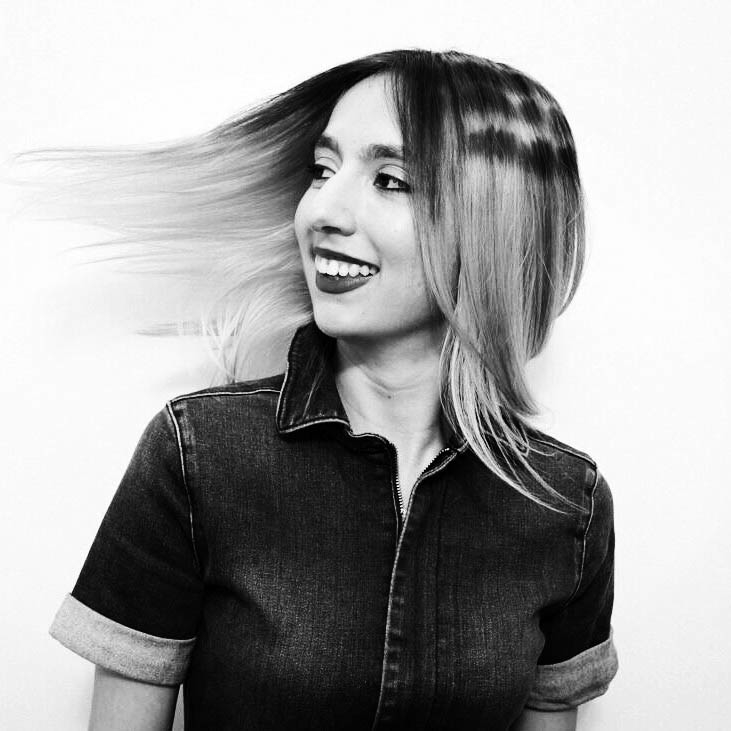LBV
In a time of mass tragedy and unspeakable loss, of course Joss Sackler would release a line of “bold impact daywear and evening attire for lighting up the night.” It’s austerity for most, but “disco-glam energy” for whoever it is that buys the clothing of a line founded by the wife of Oxycontin heir David. (Elizabeth Kennedy is the brand’s creative director.)

LBV.
Mark GrgurichThe brand’s 2019 fashion week debut was met with protest. Courtney Love, a former heroin addict, reportedly declined a $100,000 offer to attend its 2019 show. Many activists wondered how a woman connected to the family responsible for pushing Oxycontin on doctors and patients without acknowledging its addictiveness, could have the audacity to start a luxury brand. Sackler blamed all criticism on sexism, alleging in a fiery Facebook post that a New York Times story on her line reduced her identity “to only being someone’s wife, thereby erasing any signs of [her] successes or accomplishments as a woman.”
Given the digital nature of this year’s fashion week, LBV has the opportunity to drop a lookbook on the CFDA’s site, rather than hold a live show that could draw critics. So the pieces appeared online today, featuring gowns dripping in crystals, feather, and lamé. It’s one part old-school Marchesa, the line Harvey Weinstein bullied actresses into wearing on the red carpet, plus a hearty dose of Cruella de Vil, with plumage necklines and waistbands.
LBV is far from the only collection that peddles escapism this season. But this collection especially contains pieces that are primed for celebrities or red carpet placement. Recently, Jo Ellen Pellman from The Prom wore LBV in an Elle spread. Alison Brie wore a tomato red minidress from the line on Ellen in November. So it seems that Sackler is in reach of catering to the monied clientele that many assumed would shun her, including the super-rich off to their clandestine parties or weddings (you can hear them laughing, “Socially distanced, of course!”). Call it Superspreader Chic, and one of the grossest displays of privilege during a week that already caters to the famous and unaccountable. Alaina Demopoulos
Rebecca Minkoff
Once again, Rebecca Minkoff has the distinction of being one of the few designers to host an in-person show, after doing the same in September. The once bustling main venue of Spring Studios was still quite tame, although the street style photographers had returned in full force. To make it to the entrance doors, guests had to swim through a sea of them snapping so intensely one had to ask if an Oscar nominee was on her way up to the show.
Once inside, the selected group of editors, buyers, influencers, and stylists had to submit to health screenings and temperature checks. It was an unusually warm February day, so attendees looked more fit for an early November day rather than a chilly weather with standard outfits featuring block heel booties, lightweight cotton or sleeveless wool coats, denim trousers, and of course designer bags of all brands and varieties.
After a brief, socially distanced wait downstairs in the lobby, guests were escorted up by security to the fifth floor of the venue, and upon entering the event space, they were transported to a world that juxtaposed spring florals against the concrete jungle. The set for the static presentation was designed to look like an exotic paradise with tropical greenery and flowers, where models wore bohemian and rocker-inspired looks that had both a feminine touch with more boyish cuts and silhouettes. The worlds of nature and the city found themselves aesthetically intertwined, fittingly so. Kristopher Fraser
Collina Strada
Collina Strada fashion week shows are little nuggets of escapist joy. This season’s digital presentation, called Collina-mals, featured a cast of cool people like the playwright Jeremy O’Harris, models Aaron O’Philip and Ruby Aldridge, and Brooklyn rapper/NYC mayoral candidate Paperboy Love Prince morphing into animals. The result was a little high school acting class—”OK, now run like a puppy! Be a puppy!”—but it was nonetheless charming.

Collina Strada.
Charlie EngmanThe clothes, and how they were presented, was the very definition of smile-inducing. Garden colors like heather green, daisy white, and rusty brown were everywhere, from loose-fitting dresses to skintight unitards. It was playful and childish, and the perfect antidote to other overdone, pretentious shows. But the show wasn’t just another escapist dreamworld: designer Hillary Taymour’s presentation pulsed with a current of love for her community of New York artists, one that has endured despite impossible odds. And isn’t that what fashion week is supposed to celebrate, after all? AD
Loring New York
Disco-era dressing evokes a certain tightly-defined image: metallic jumpsuits, dangling earrings, polyester pantsuits. So it’s a pleasant surprise that Loring New York designer Long Xu, who created his collection after binging a documentary on Studio 54 while in quarantine, does not veer into that Halloween costume ideal of the seventies. Aside from an oversized, very Diane Keaton colorblock pantsuit, the lineup is homage rather than pastiche. It’s a refreshing reminder to other designers that inspiration doesn’t always have to be so literal.

Loring.
Jason ChauBlack-and-white checks recur throughout the collection, and everything looks very wearable, with just a touch of whimsy. One pair of gold pleated jersey bell bottoms might be enough to convert even the most ardent sweatpant supporter. Another soft, purple suede overcoat has that throw-over-everything silhouette. Ultimately, Xu proves he knows how to dress women whose sense of style may have evolved, but not completely evaporated, during the pandemic. AD
C+plus Series
C.T. Liu, the designer behind C+plus Series, loves a high-concept—last season, his collection was inspired by the Natalie Portman horror movie, Annihilation. Now, the Shanghai-based line is back at NYFW taking cues from Freud’s concept of the id, ego, and superego. And how does that make you feel? Probably great, considering Liu’s sweeping silhouettes and knack for making statement coats is practically swoon-inducing.

C+plus Series.
C+plus SeriesThe collection debuted in a short film titled “Awakening Consciousness,” where the space-themed background visuals slightly distracted from the pieces. Liu’s clothing is more than solid enough to stand on its own, without gimmicks or a highly-produced set pieces. Oversized coats, the kind you want to burrow into and spend the night, were the highlight, including a regal purple one with a cape. I’m not quite sure where the armholes are on that one, but I would gladly sacrifice whatever was required to look that good.
Another deconstructed black quilted puffer with open shoulders may not be practical in the cold, but like everything else in the collection, it sure exuded a composed coolness. AD
Jonathan Simkhai
A lovely collection by Jonathan Simkhai—really, no one garment the same, all inviting repeat gazing—balanced inventive design and tailoring with bursts of color. While many designers come up with the floweriest baloney about inspiration, Simkhai’s explanation of thumbing through a coffee table book and coming across “an intimate image” taken by the photographer Tseng Kwong Chi rang not just true, but beautifully realized in practice.
The photo, taken in 1983, was of Keith Haring’s body painting, “Into 84.” Simkhai writes in show notes that he was “moved by the connection” that Haring had with the choreographer, Bill T. Jones, “to create such powerful work using his body and his movement. Then when considering the friendship of Keith and Tseng and the connection they all had while capturing this image, it is in so many ways a celebration of kinship and creating.” That connectedness is something, writes Simkhai, “we are all missing” right now, and led him to think about “the human connection we have with clothing and craft.”
The result is a collection featuring a lot of form-fitting, dancer-friendly custom lace, chiffon, and Alpaca wool, and an array of fringes, tassels, and cutouts; the resulting silhouettes variously smooth, scalloped and lightly roughed-up, with dainty chain-belts fitted around waists. You can wear Simkhai’s slinky, beautiful clothes any time of course, even if this collection genuinely attempts to meaningfully engage with the times we are in. Tim Teeman




